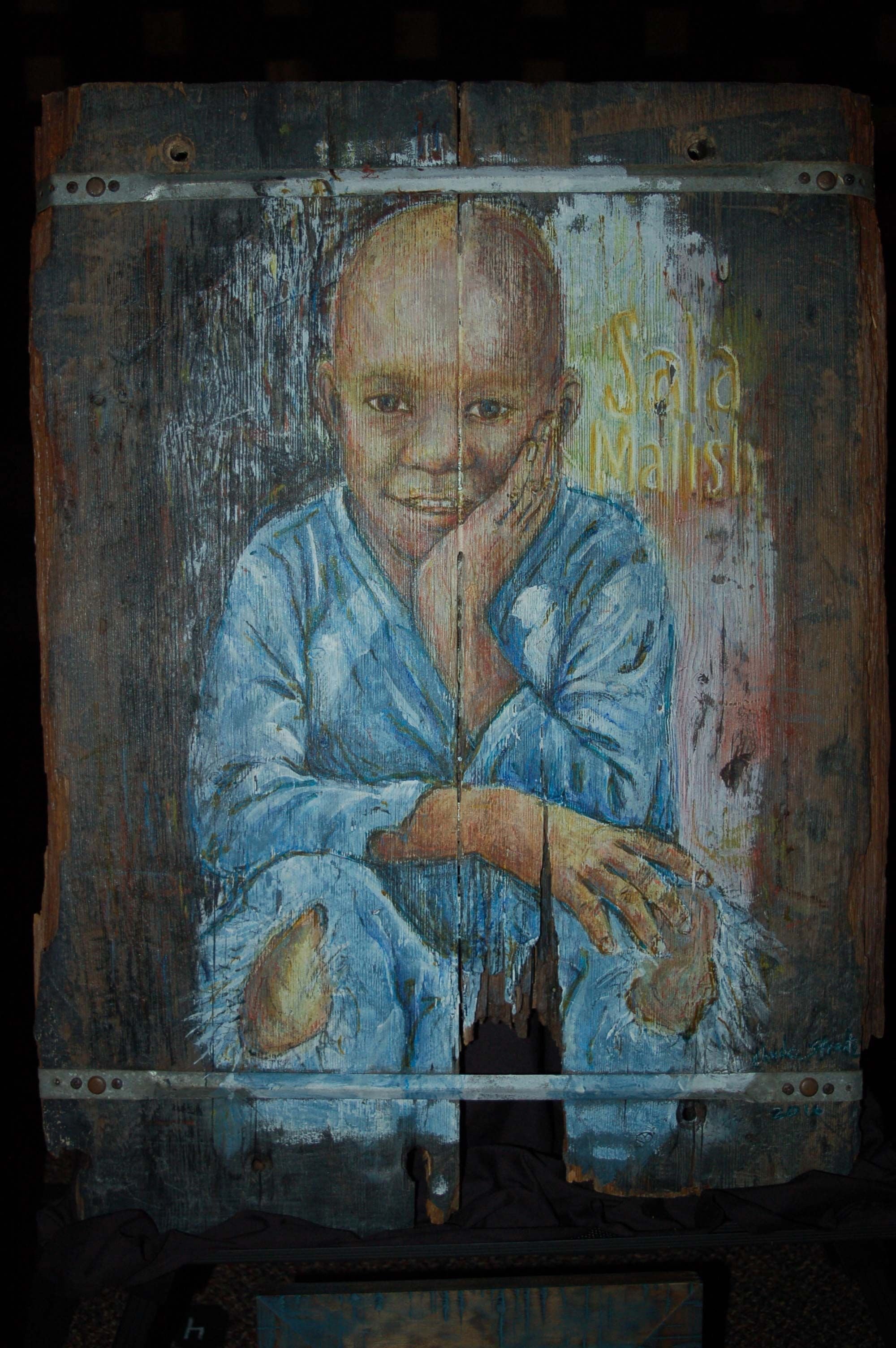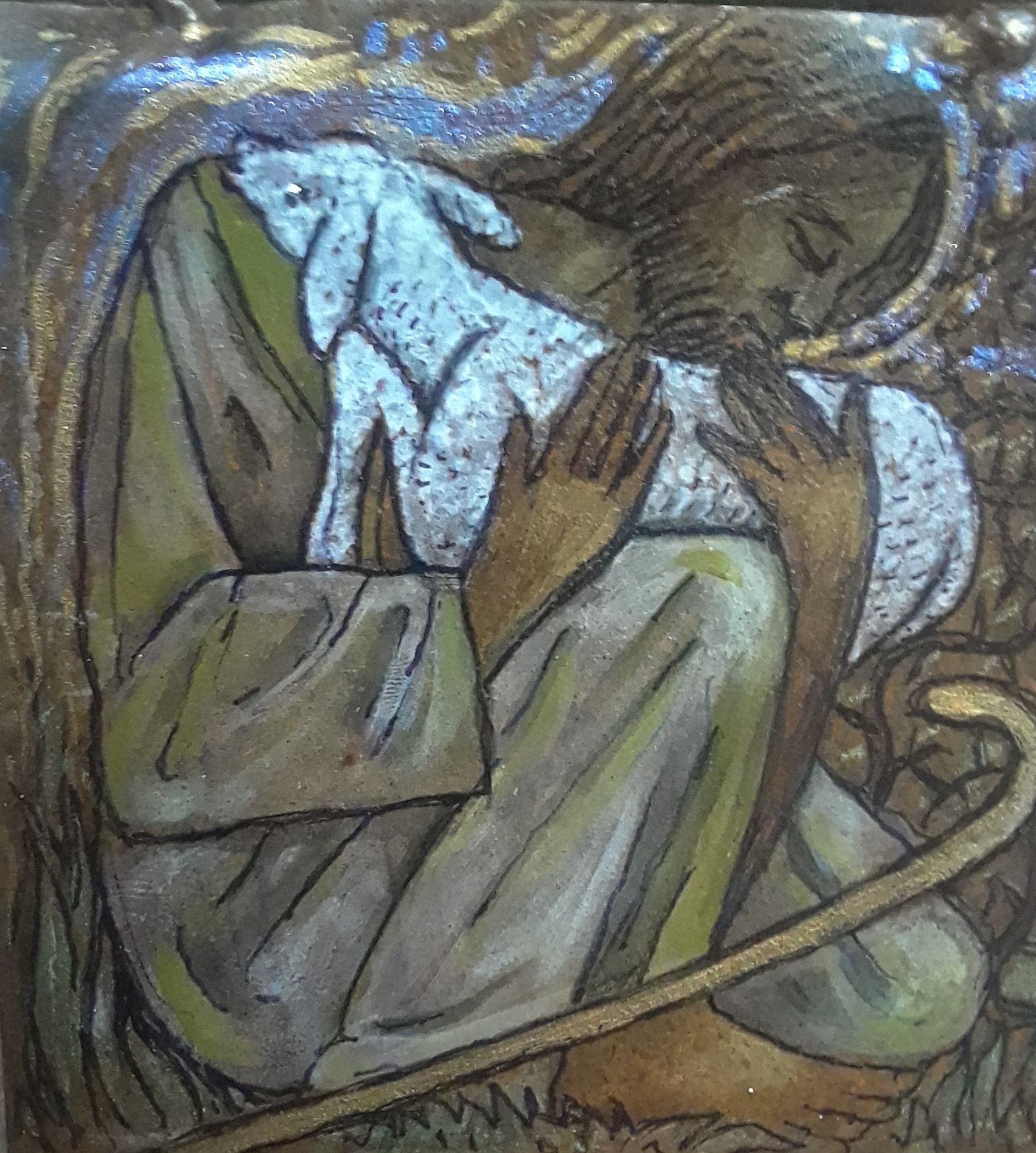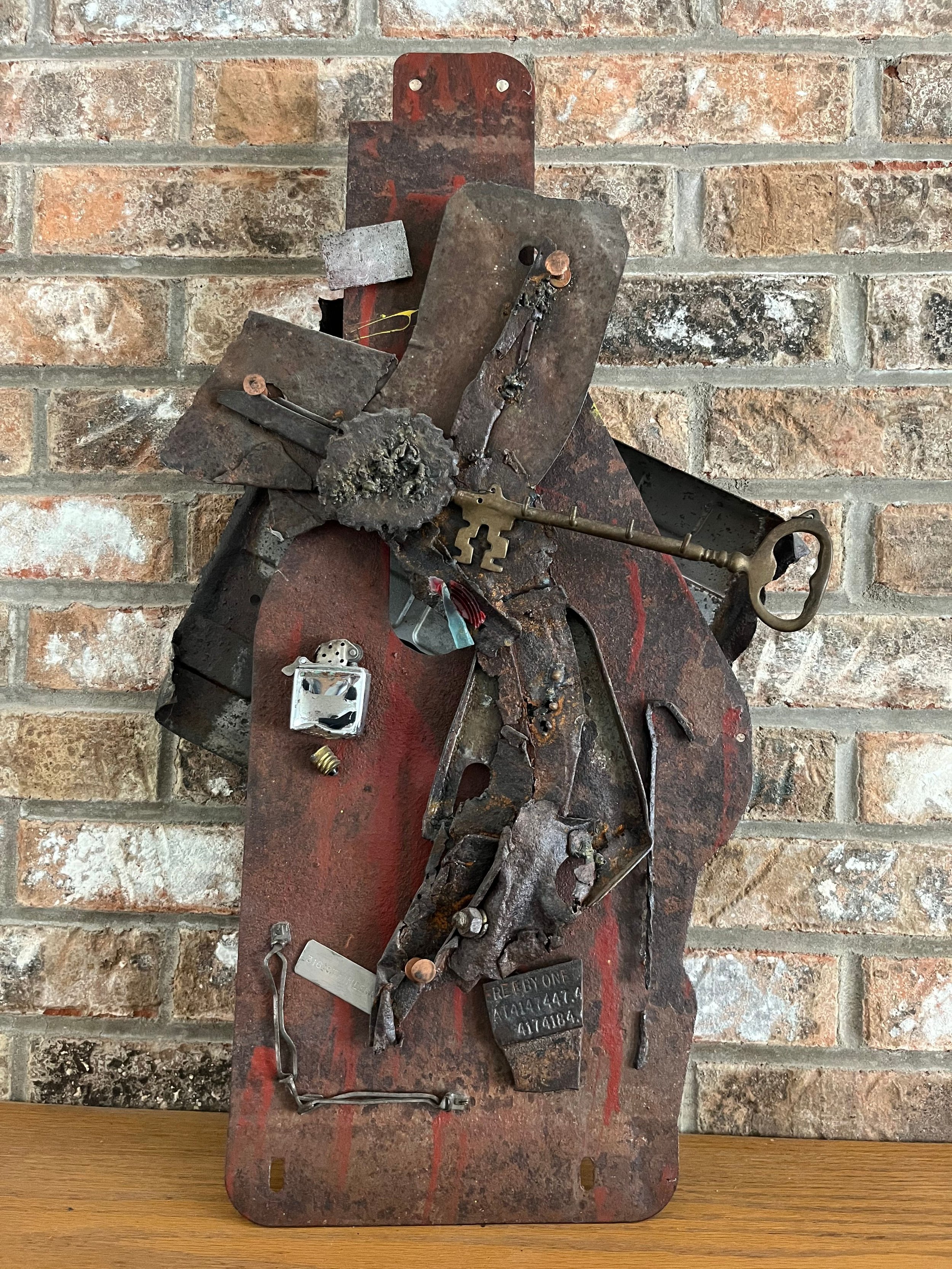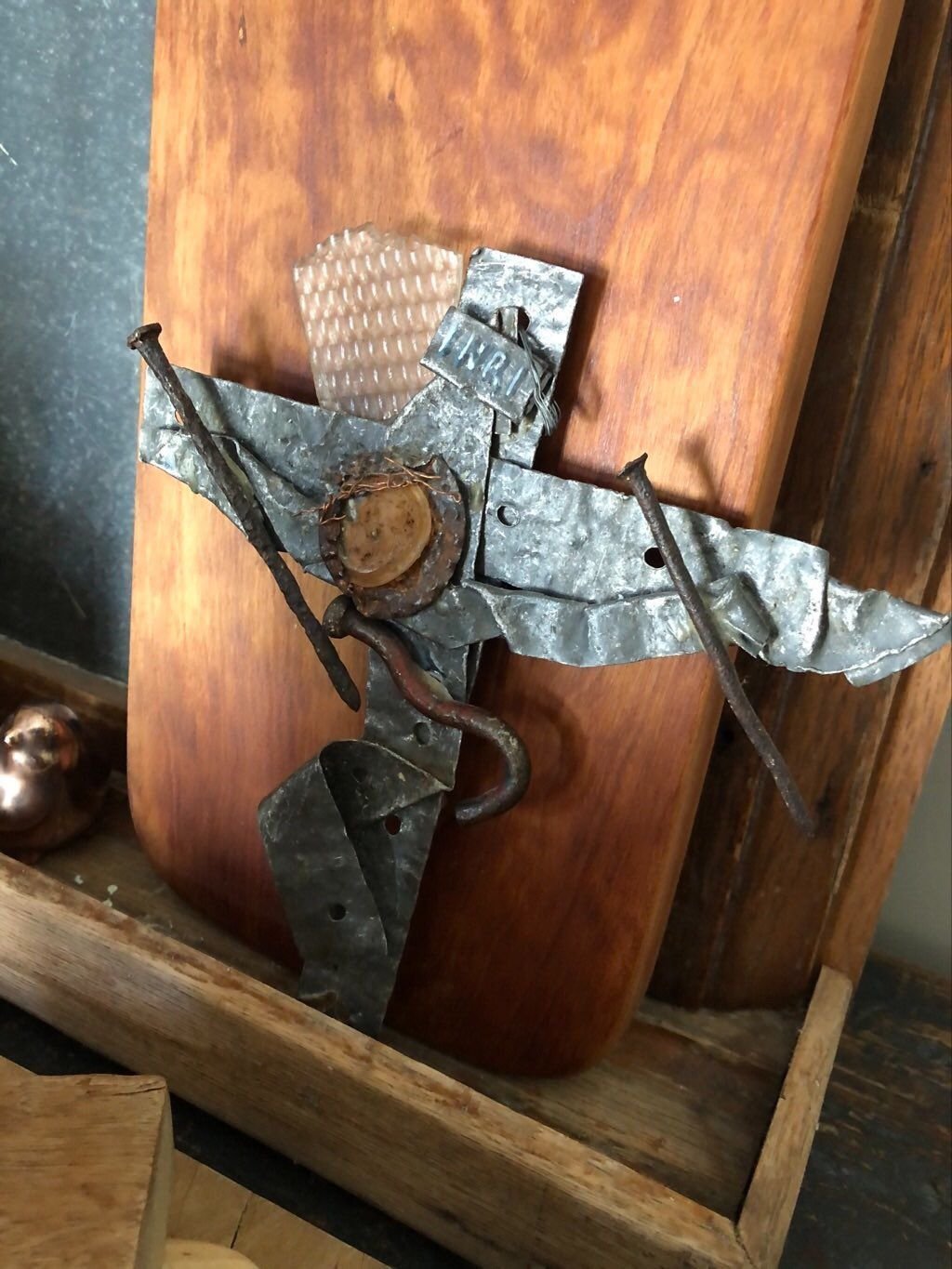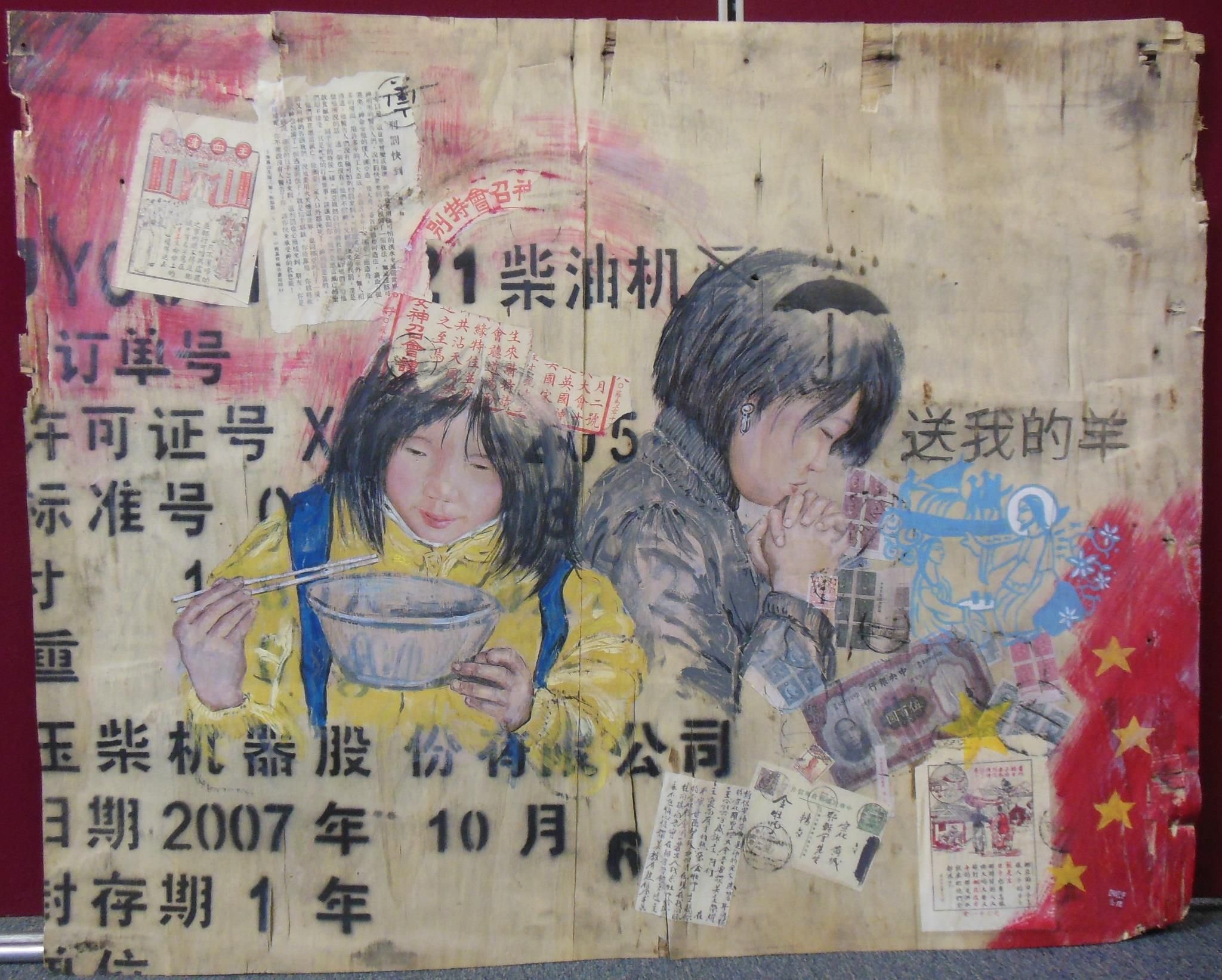Potential in everything
Potential in everything
Late artist Charles Strantz remembered
for faith-centered mixed media, generosity and love
By Katie Jamieson
“He’d envision these things,” says Sue Strantz, describing how her husband, artist Charles “Chuck” Strantz, would see something on the side of the road meant for the landfill and stop to pick it up, because it “would look cool” in an art piece or TV set.
Chuck, who died November 1, 2020, less than a year after being diagnosed with renal cell carcinoma, lived all of his 68 years in Michiana and worked nearly 50 years at LeSea Ministries in various capacities, including graphic design, TV set design and, most recently, as church/ministry relations for LeSea Global Feed the Hungry. In this position, he traveled and served in several countries, including Uganda, Malawi, Zimbabwe and Darfur.
“He saw so much potential in everything,” says longtime friend, artist and sign maker Steve Depositar. “There was always something of use—whether it was a spoon on the ground or somebody sitting on the corner of a street. He saw potential, and he would take the time to try to engage.”
Chuck put as much care and attention into his relationships as he put into his work, his art and his calling to serve Jesus. At his memorial service, people shared profound and touching stories of how Chuck impacted their lives for good. He was said to have “shined” and was described as “one of the best people in the world.” Someone in tears asked, “Who here has not been helped by Chuck?”
“He was always seeing things that would spark something that would draw people’s attention back to God,” says Sue. “Just to make people stop and think about the things that mattered in life ... Most of the art of his that I saw was inspiring people to reconnect or connect with God.”
Chuck’s art centered on spiritual and biblical principles. He did a series of mixed media crosses called Trashed on Old Hwy 33 that was assembled from metal and glass that he gleaned while walking along the shoulder of the highway. When he talked about these works, he’d remind people that Jesus had died, sacrificed his life to save them, when he was 33 years old.
Remembering the Sacrifice
One of the larger pieces (15 by 25 inches) Chuck made in 2014, “Remembering the Sacrifice,” is displayed in the home he shared with Sue. The base or background looks like pieces of rusty metal, probably parts that fell off vehicles driving down the road. In front of that, made of multiple pieces of metal, is what looks like a human figure nailed to a cross. In the piece you can see a skeleton key, a lighter, the base of a tiny lightbulb, a military dog tag, some red and green broken glass, nails and a bolt—all had a deeper meaning.
crucifix
crucifix
“He would see pieces and things that would be symbolic to him of spiritual truths, and he would put those into a piece,” says Sue.
One of the smallest pieces in the series also hangs in their home, displayed just as Chuck found it, a 2- by 6-inch thin piece of metal mangled and flattened by car wheels into the shape of a simple cross.
Mother and Child
In addition to creating mixed media sculptures featuring found items, Chuck drew and painted, sometimes on paper or stretched canvas, but more often on other surfaces, like metal, gnarled pieces of wood, rocks or the worn surface of an old table saw workbench. He also created some very large pieces—for example, a mural painted on a 20-something-foot-tall piece of cloth and more than one imposing cross built from large wooden beams.
Much of Chuck’s work was made as gifts or for specific events—church events, holiday celebrations, concerts and Art for the Heart of Africa, an annual auction organized by The Vineyard Church of Mishawaka (where Chuck was an active member) to raise money to support orphaned South Sudanese children.
Even in his youth, Chuck was busy making posters and newsletters to promote local Christian events. He was known back then for his long hair and his love of printmaking and graphic design.
“The thing I remember most about my first real interaction with Chuck was at a Larry Norman concert at Notre Dame,” says high school friend and retired engineer Barry Sous. “[Larry] was one of the first Jesus movement rockers. He wrote the song, ‘Why Should the Devil Have All the Good Music?’ He was a long-hair, kind of a rebel, but he pioneered Jesus rock. Chuck, being involved with media, made posters. Our little Bible study group had them on the floor, pasting on the correct date, putting them up all over the city, on buildings and telephone poles.”
Barry learned graphics and layout from Chuck, as did another high school friend, retired Anglican priest and painter Dan Rice.
“We collaborated a lot,” says Dan. “He taught me how to do graphic art. Chuck went to Ivy Tech and took a couple of years doing courses in graphic art the old way—literally knives and paste—cut things apart and paste them together. He taught me how to do that. He was brilliant.”
Another friend and painter, Bruce Weeks, recalls working as an art intern at LeSea under Chuck’s supervision.
“I admired … his ability to remain calm under the pressure of an imminent deadline,” says Bruce. “It was as if he was in another time zone and still had another hour or two before the presses would need to fire up. Chuck had an immense knowledge of all the intricate details of prepress.”
Chuck also shared his knowledge with his son, Judah Strantz, who works now as a graphic artist.
“My dad was always working on art projects when I was a kid. Some of my earliest memories are of him building and painting gifts for me and my two older siblings,” says Judah, the third of Chuck’s four children. “My dad shared art skills with all of us kids. He employed all of us at various times to help with his sign shop. He also got me a graphic art assistant job at LeSea, and that is where I gained all my layout and printing knowledge from him personally.”
Even Sue, Chuck’s widow, learned graphic design from him when she was a student in the adult program and he was an adjunct professor at Bethel University in 1999/2000.
“He taught the class in which we had to rebrand a local business by making a logo for them,” says Sue. That’s when they first met.
Among the first things she remembers noticing about Chuck was how conscientious and considerate he was. She also describes him as very social, genuine and caring. They had been married 12 years when Chuck died.
“I joked. Always called him Mr. Congeniality. He could not walk a straight line between point A and point B if there were people in between,” Sue says. “He’d zig-zag all over the place and be the first person to welcome someone into a strange situation. By his admission, he always seemed to draw the underdogs, the lost dogs, the people that didn’t have anybody that really cared about them. He’d go out of his way to take them under his wing.”
Chuck was always organizing the members of his Bible study, The Garage Guys, to help people with various projects, like fixing a roof, yard work, cutting up a tree that fell in someone’s driveway or replacing gutters.
“He was organizing, orchestrating helping people all the time,” says Barry, his high school friend. “My honor was to ride the wave that he was creating. Radical giving. The definition of love.”
All of his friends and family agree that Chuck’s life was characterized by practical and sincere generosity. He was known to have lived artfully, intentionally and with great love.
Chuck’s mother, Trudy, who is 95, calls him “a beautiful person” and describes him as “nonstop.”
“Once he got the true meaning of being a Christian [in his senior year of high school], that was that. He never strayed from that,” she says. “He was a good Christian.”
She says her son Chuck, the second of 10 children, was a natural artist. She tells a story about Chuck in elementary school: He drew a tree more detailed and realistic than any of the other children in the class. His teacher was so impressed that she called the principle and other teachers over to admire his work.
Chuck used to tell the same story, crediting his mother with having inspired and encouraged him to use his imagination and to see the world with wonder. He talked about how she’d send her kids out to play in the mud.
“She encouraged us to relish adventure, to have fun and be creative,” said Chuck in 2012. “While other mothers were chiding Dick and Jane with ‘be careful and don’t get your clothes dirty,’ my mother was cranking up the hose, making mud holes for us to frolic in. She’d say, ‘make sure to squish the mud between your toes—it feels so good!’’’
------------------------------------------------------------------------
Katie Jamieson is Chuck’s stepdaughter and a poet. When she thinks about how Chuck referred to himself as Chuck-dad and called her Katie-girl, she cries. She fondly remembers dancing a two-step with Chuck in the living room just weeks before he died.

